… of these conditions.
These are all from yesterday, when the temperature here topped 18°c – not bad for December 30th, and I think it got even higher today. A cold snap is on its way, with the possibility of it dipping below -5°c, so these pics are in appreciation, and to refer back to when we’re not going out at all.
First off, the turtles put on a display.
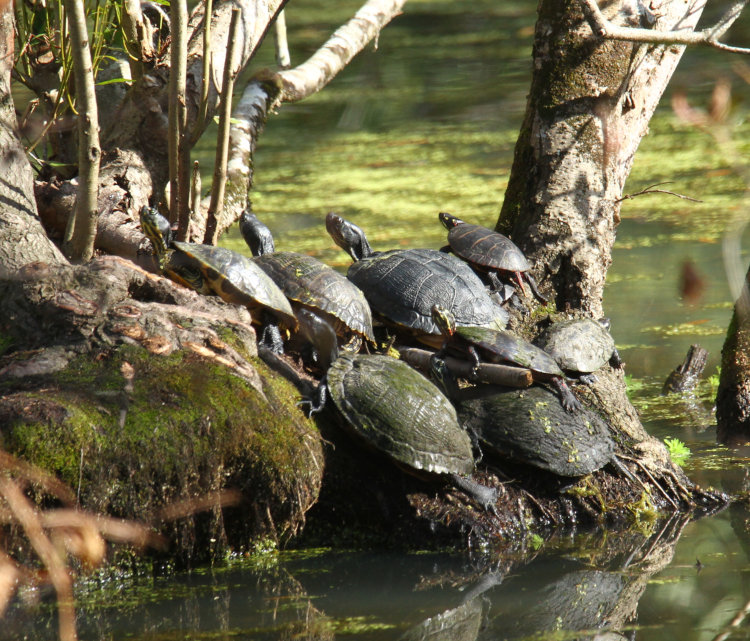
That’s five yellow-bellied sliders (Trachemys scripta scripta) and three eastern painted turtles (Chrysemys picta picta, the smaller ones) demonstrating solar efficiency by basking in every available spot on that little tussock in the pond. Again, shot with the long lens because they’re spooky enough not to allow a close approach, plus the 18-135mm would only produce moderate results from the pond edge where I’d have to stand to keep my feet dry. I don’t mind getting my feet wet (check the domain name, for dog’s sake,) but a) the water’s still cold, and b) the bottom may just try to swallow me up.
While I had the long lens attached, I checked on the little guy on the small snag.
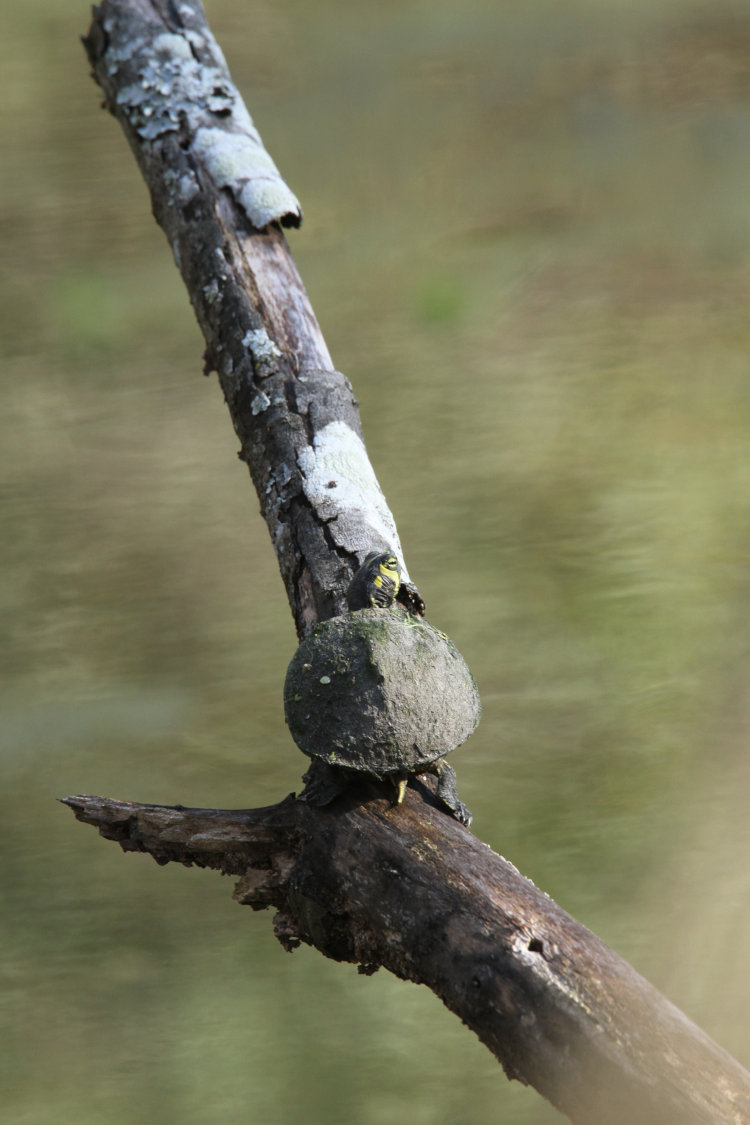
That’s the full frame, and enough to tell that it is indeed another yellow-bellied slider, but we can crop in tighter for a better look.
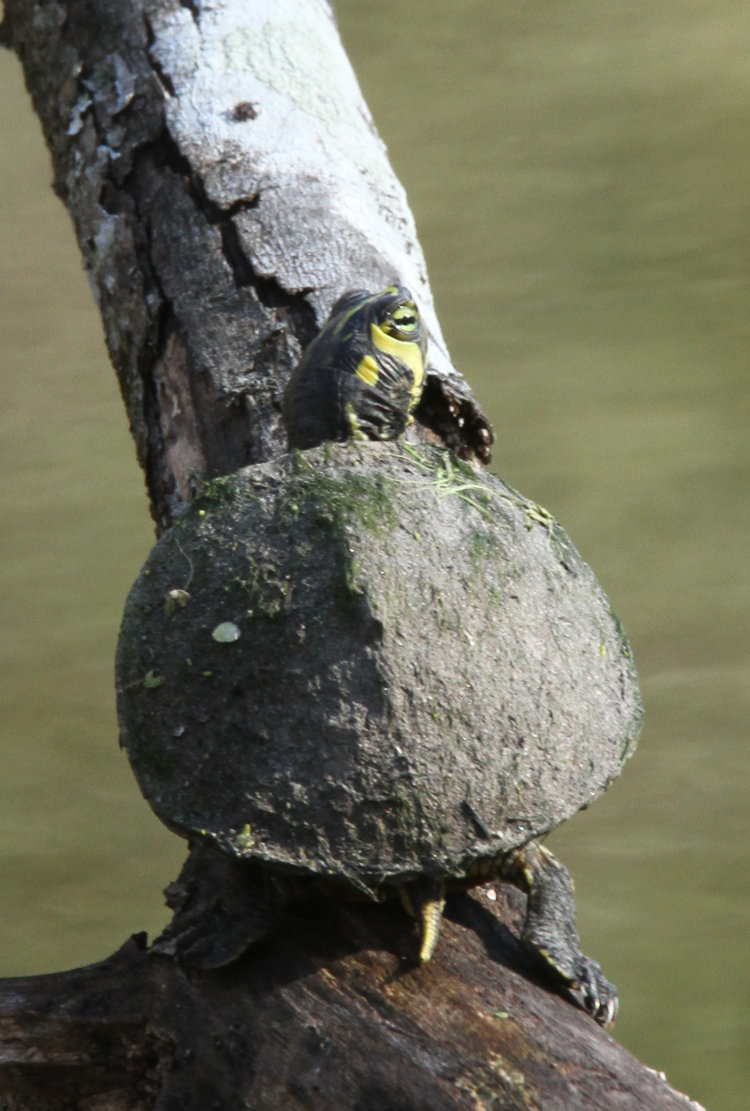
Again, perhaps as long as your palm – or my palm, at least, which for the record is about 11cm – where exactly should I be measuring, anyway? I mean, there’s a little indent in the middle on the wrist side, but I don’t want to sell myself short either.
Look at that little snub nose, though! For comparison, a large adult of the same species, that had spooked from a nearby log on my approach (this guy never budged,) poked its head out of the water to determine that I had not yet moved on:
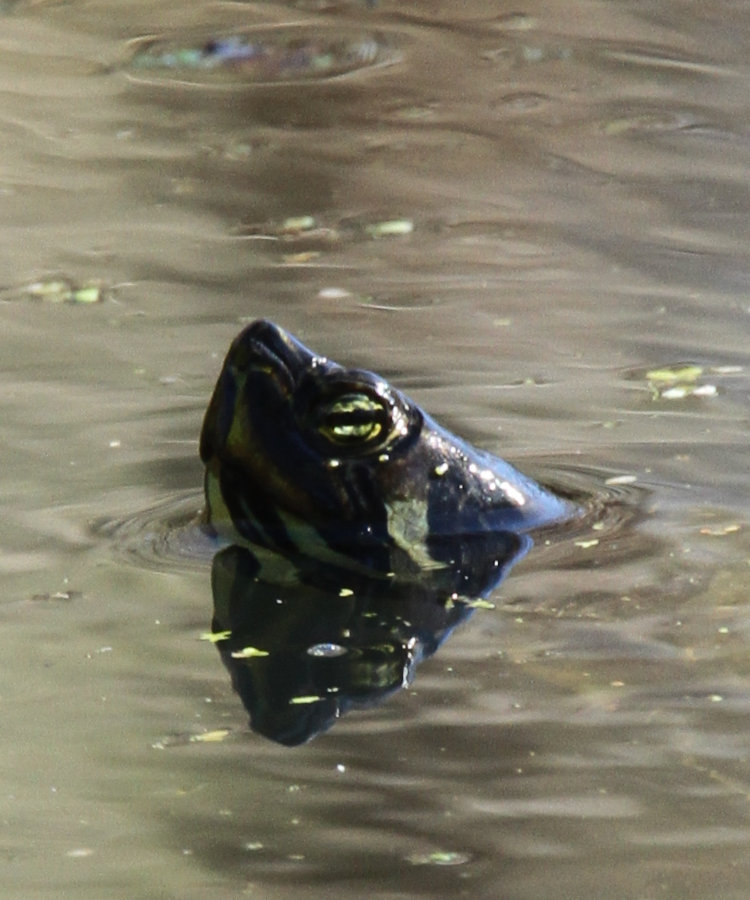
I always see that horizontal line through the eye staying level, no matter how the turtle raises its head, and contemplate how their eye movement differs from ours, but then again, so does everything else. Save for the tails of course, which are remarkably similar.
What?
The Carolina anoles (Anolis carolinensis) were of course enjoying the weather too, and out in force.
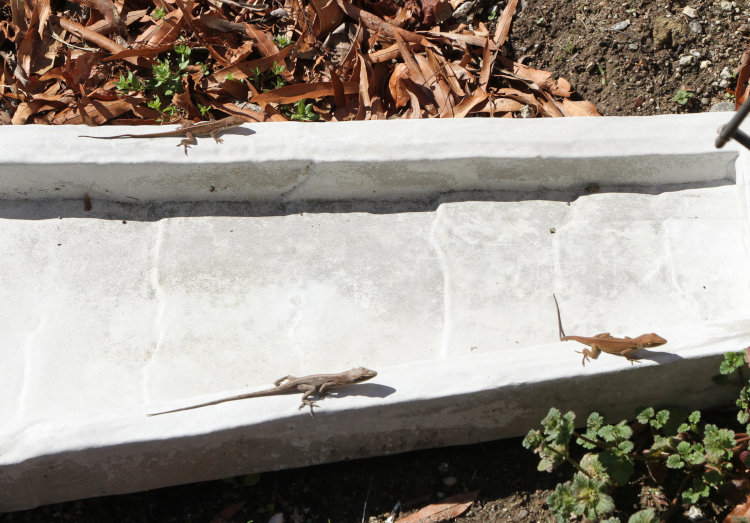
While this was right at my feet, a few meters away sits the edge of the screened porch, where numerous anoles poke their heads out of the frame edges as soon as the sun hits it enough. This is easy to see from the kitchen window, but shooting from there isn’t recommended, and they won’t let me approach close enough for a good view from the outside, the spoilsports. But it’s always amusing to see up to eight heads poking from the cracks, all lined up together, like dogs on the dock looking at their favorite ball in the water.
There’s a big one that lives alongside the light pole on the front walk.
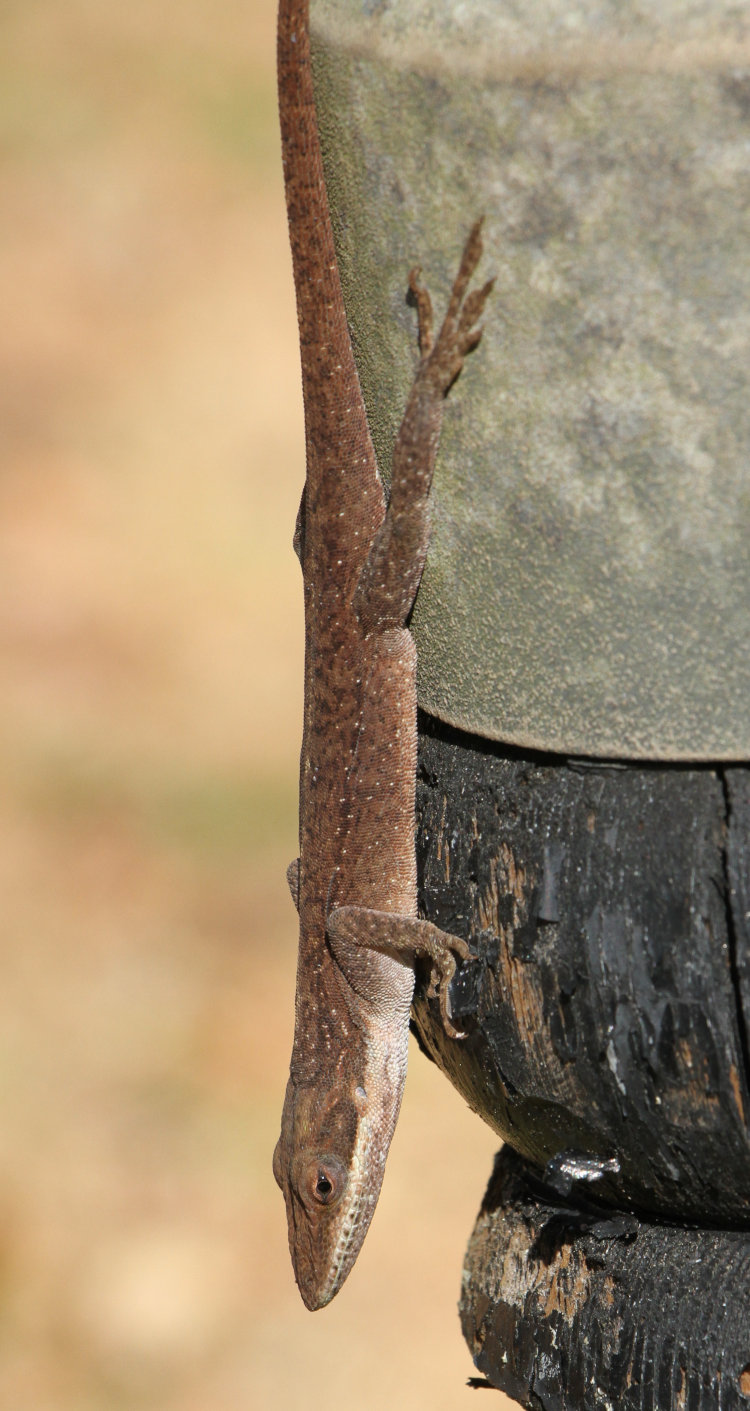
It’s funny how they seem to have certain territories, though this may be a fall and winter thing – this one, the largest in the area, is frequently found sunning itself on the pole, and isn’t too spooky, unlike another half its size that lives in the pole itself but vanishes at any close approach.
And the two (at least) in the greenhouse remain happy, it seems.
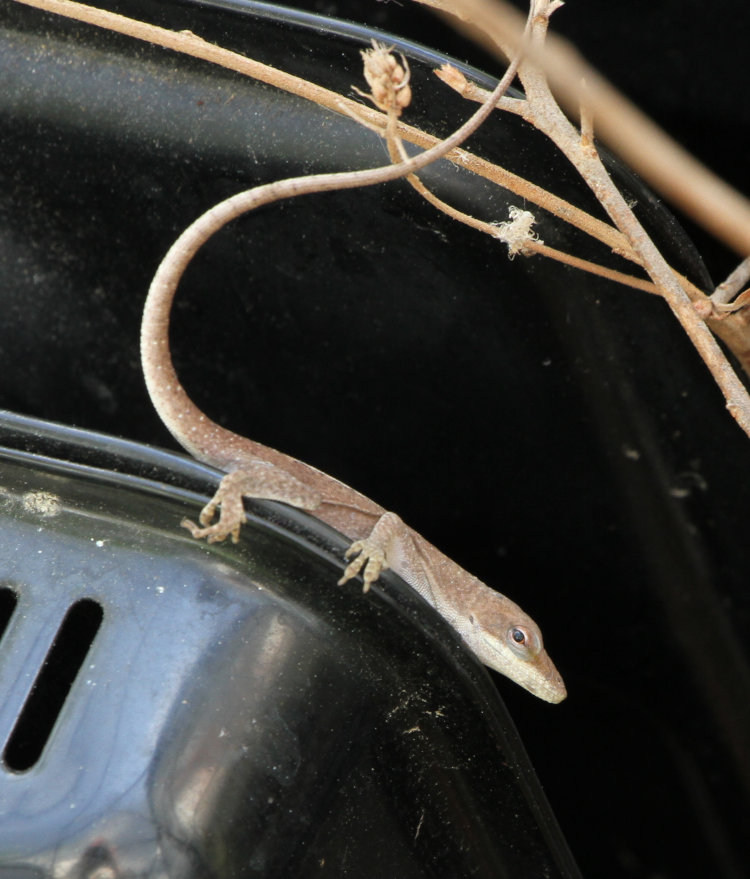
This is the smaller one, perched on the heater that we have in there to maintain safe temperature for the potted plants. Notably, I got a close look at both on this session, and neither seems to have any issues with their hind toes – are they growing back? I mean, I can track these better than any other, since they live on the pineapple plants in the greenhouse, but I’m not sure there aren’t more in there.
While we’re in the greenhouse…
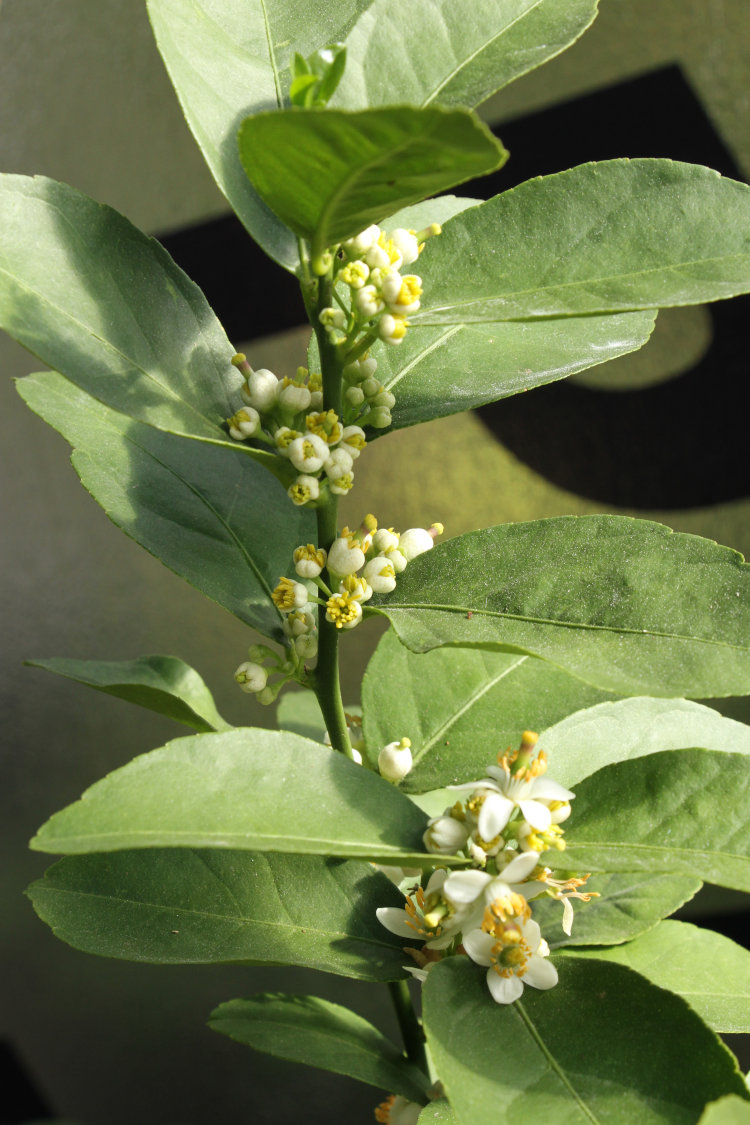
This is just one cluster of flowers on one of the key lime (Citrus × aurantiifolia) trees – there are two trees, and dozens of clusters, all of which I’m trying to keep up with pollinating. I mean, if even half of these germinate, we won’t know what to do with all the limes, but I’m trying to be conscientious, especially since no other pollinators are getting in and the lizards seem reluctant to earn their keep in this manner.
And the lemon trees.
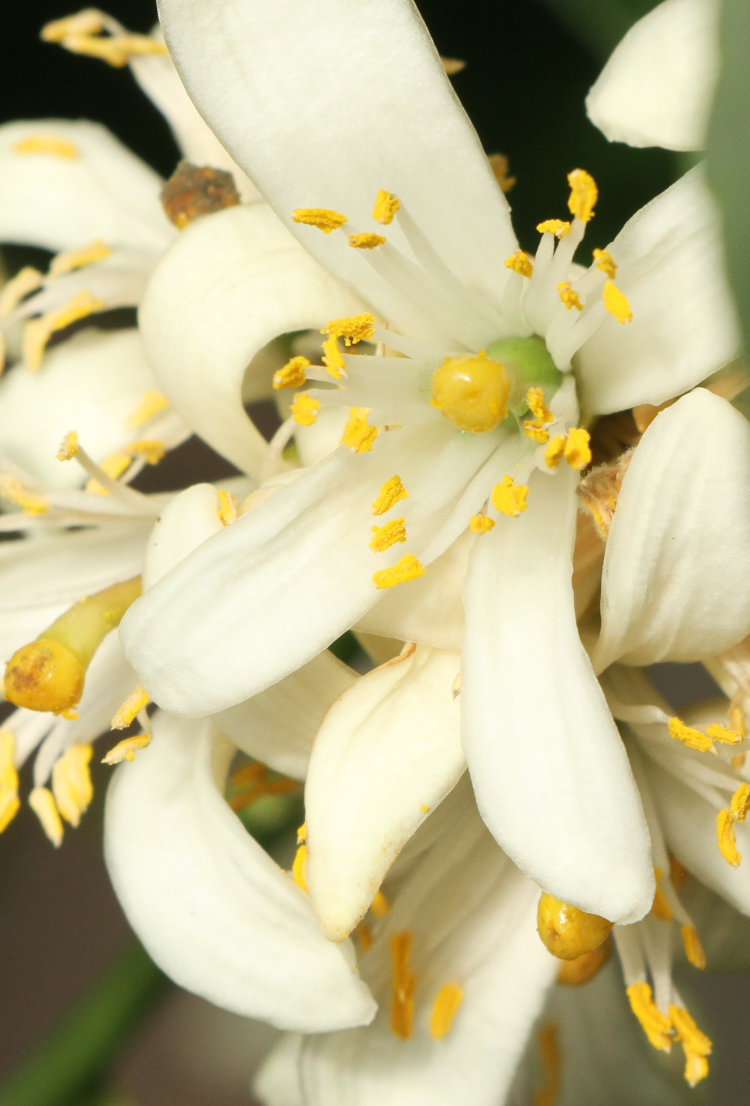
Even though they’re closely related (I think, anyway,) the flowers of the lime and lemon trees are significantly different, and the lemon blossoms last a lot longer. If you look closely, you can see evidence that my pollination efforts are successful…
[No, cut it out you nincompoops, I just use a broad, soft bristle brush – you just have to get pollen from the anthers to the stigma… the yellow fuzzy bits to the yellow blobby bit. Sheesh.]
… so it’s worth being out there every two days dusting away. Note that these flowers are there while the trees are still hanging heavy with lemons just about to fully ripen – a couple are the size of baseballs, no lie. I’ll show you when we pick them.
Further evidence that it seems to be working (I mean, aside from the fact that these same trees flowered out last winter in the greenhouse, before any natural pollinators could get at them, so it was up to me then too):
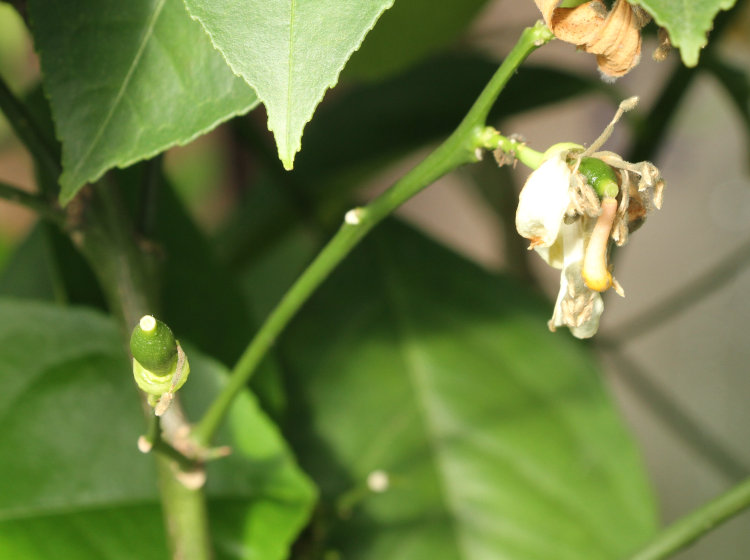
The one on the right is just losing its flowery bits, while both are showing swollen ovules, the green portions – these are the things that develop into the fruit, and I believe that they wouldn’t swell unless a bun was in the oven, so to speak.
And more pollination, properly done this time.
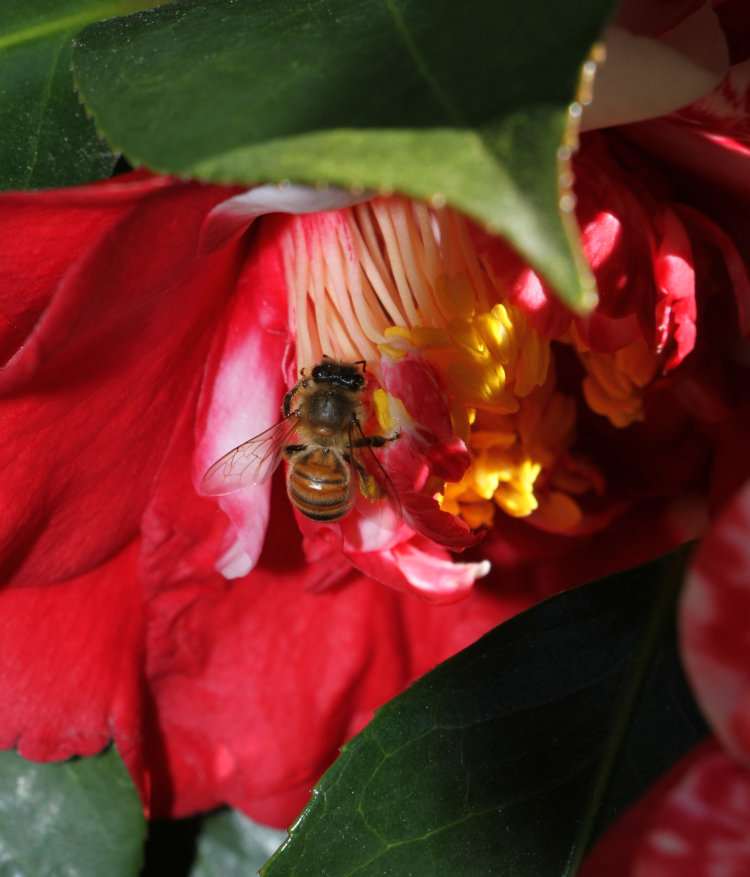
The camellia (Family Theaceae) right by the front door is blooming madly, on the side that gets sunlight anyway, and the European honeybees (Apis mellifera) were doing their thing. This one was in deep shade under the leaves, so I popped up the flash on the camera to do the fill-flash thing, which worked well. But then another (or maybe the same one) approached a bloom that was in much better light.
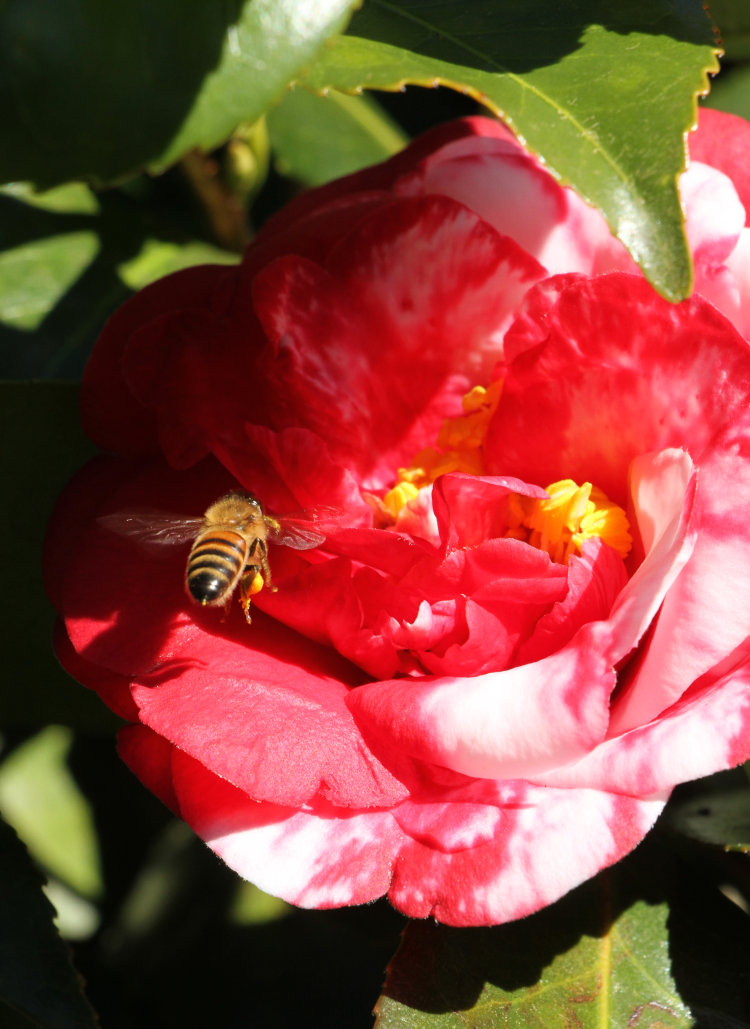
The focus wanted to track the flower and not the dodging bee, but they got close enough to the same focal distance to make this one sharp enough while in midair, with no use of the flash either.
And it provided a nice profile, which doesn’t happen often from pollinators.
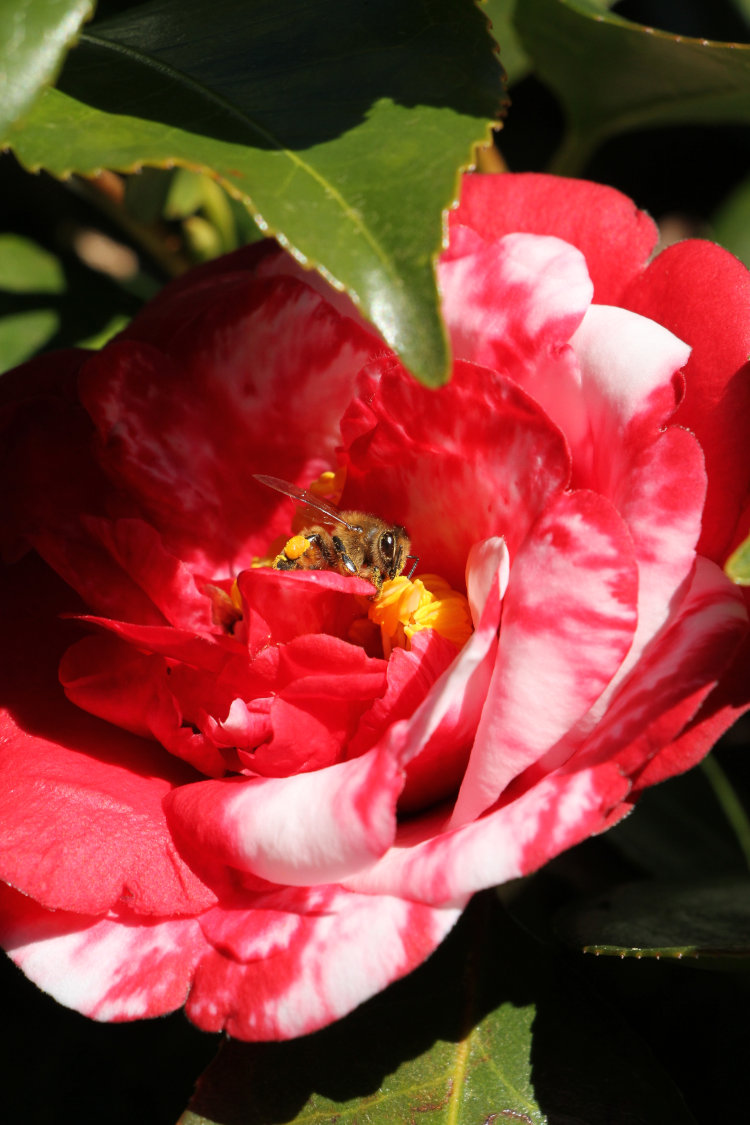
This is full frame, and gives the color and shape of the blossom quite well, but if we go in closer, we get more detail from the bee.
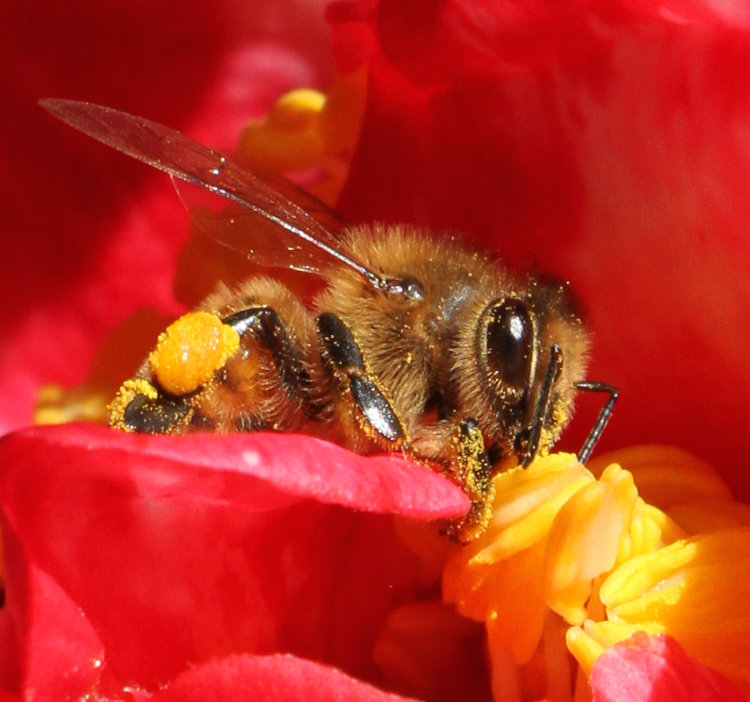
I can live with those results.
So, yeah – a nice day for late December. Glad I left New York.




















































